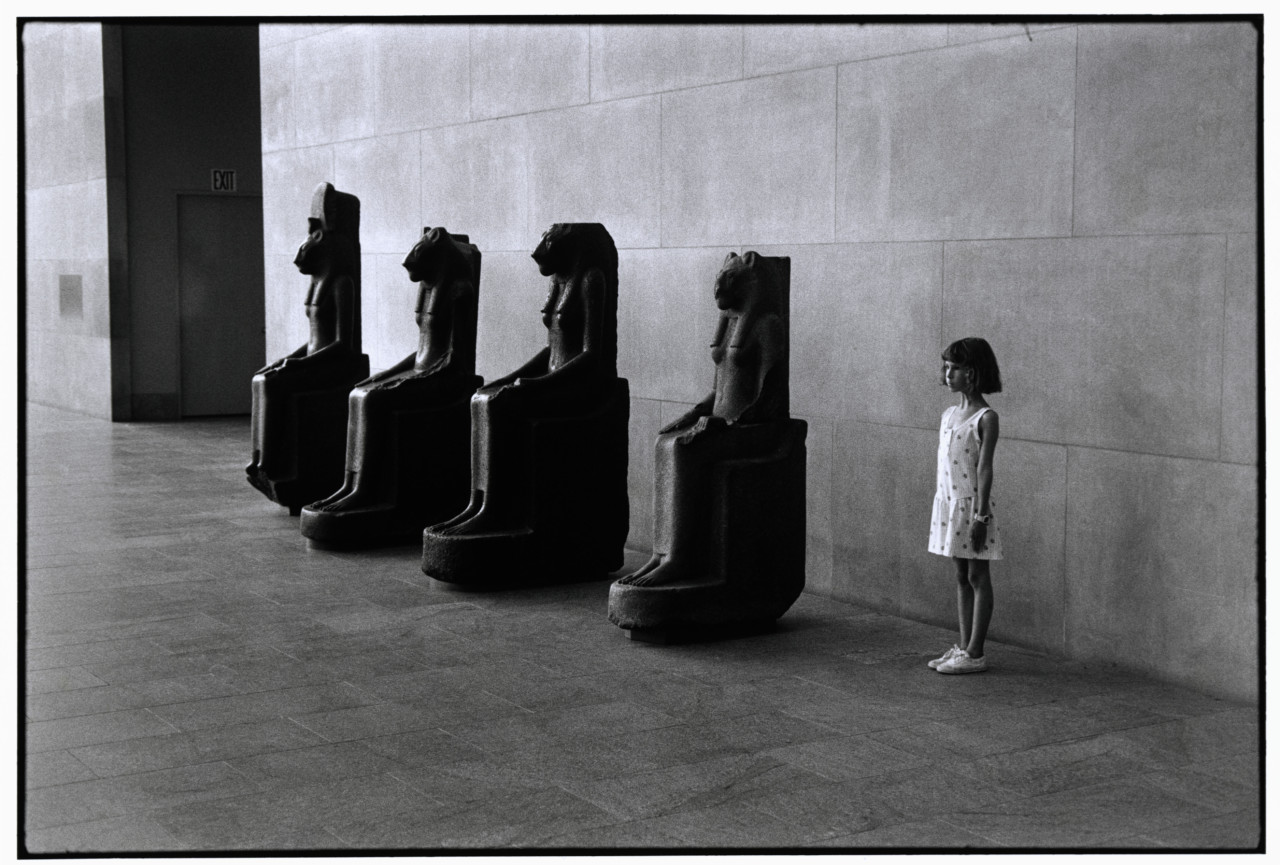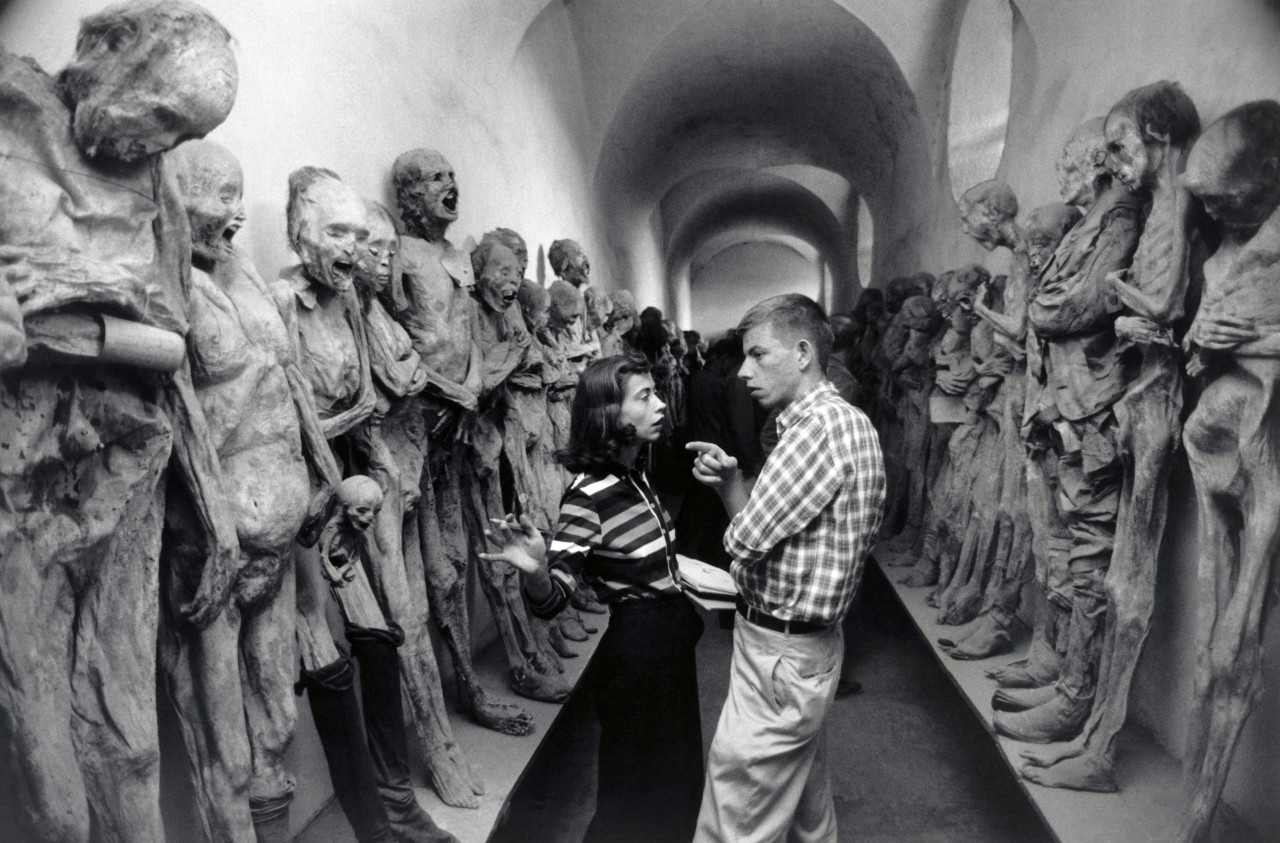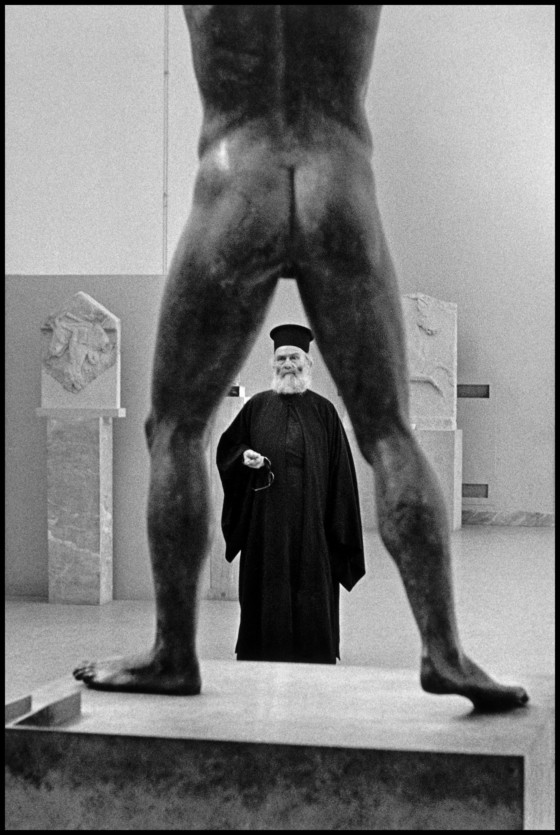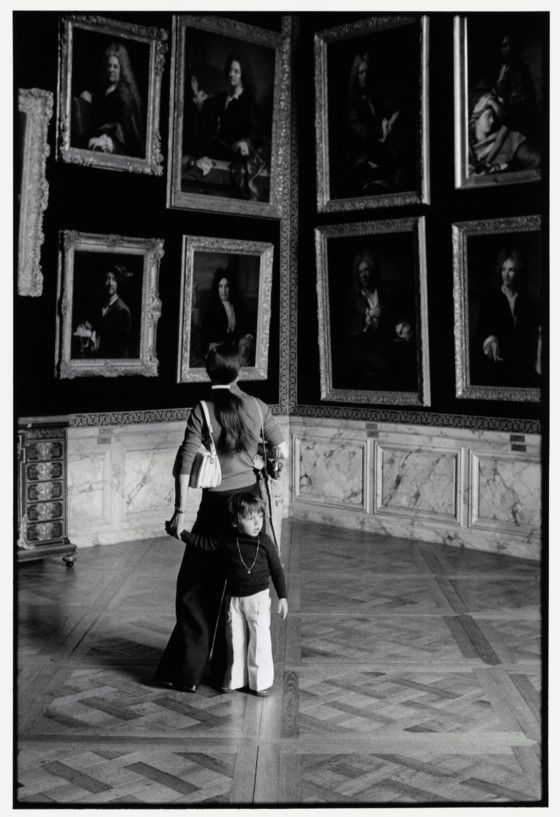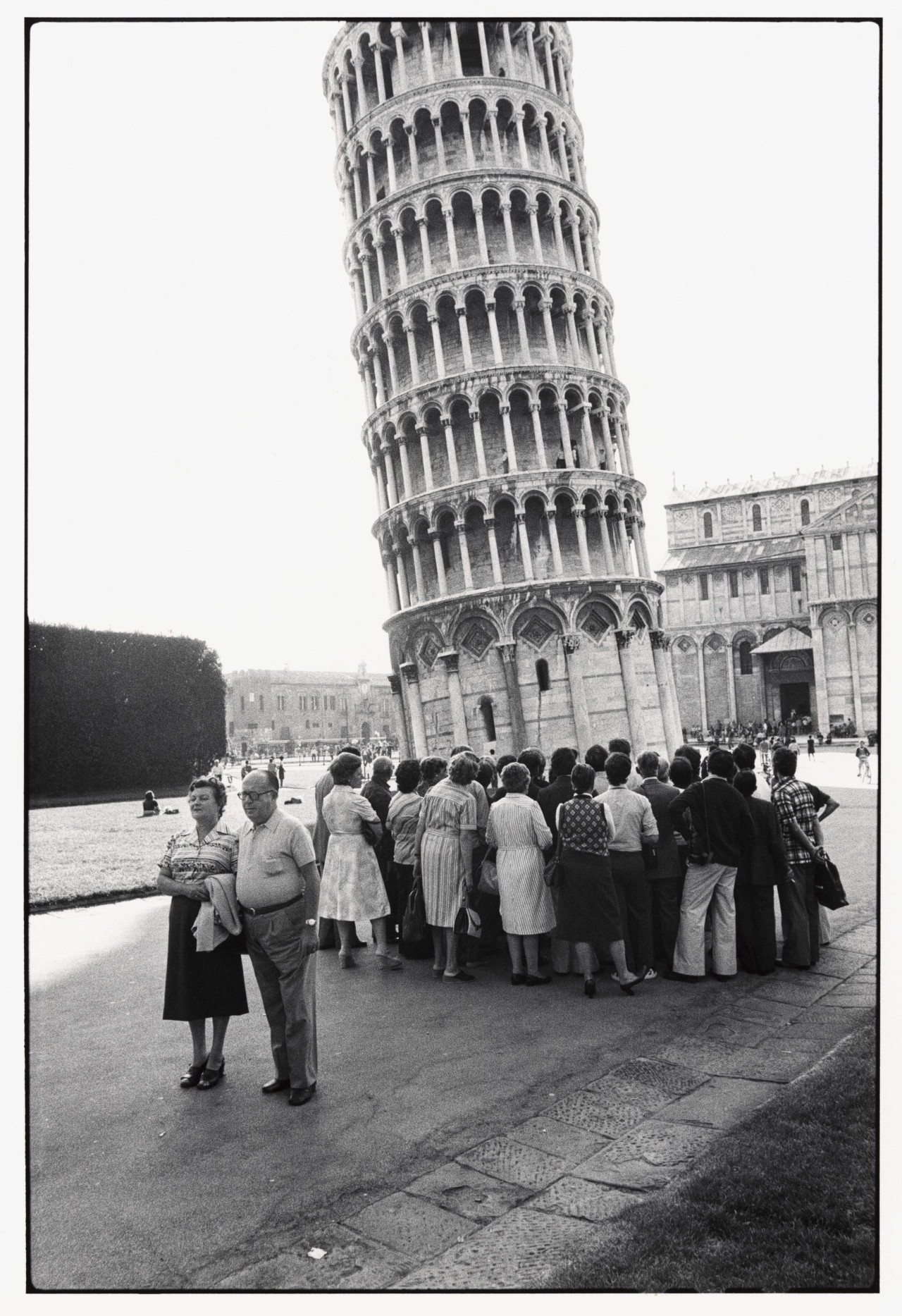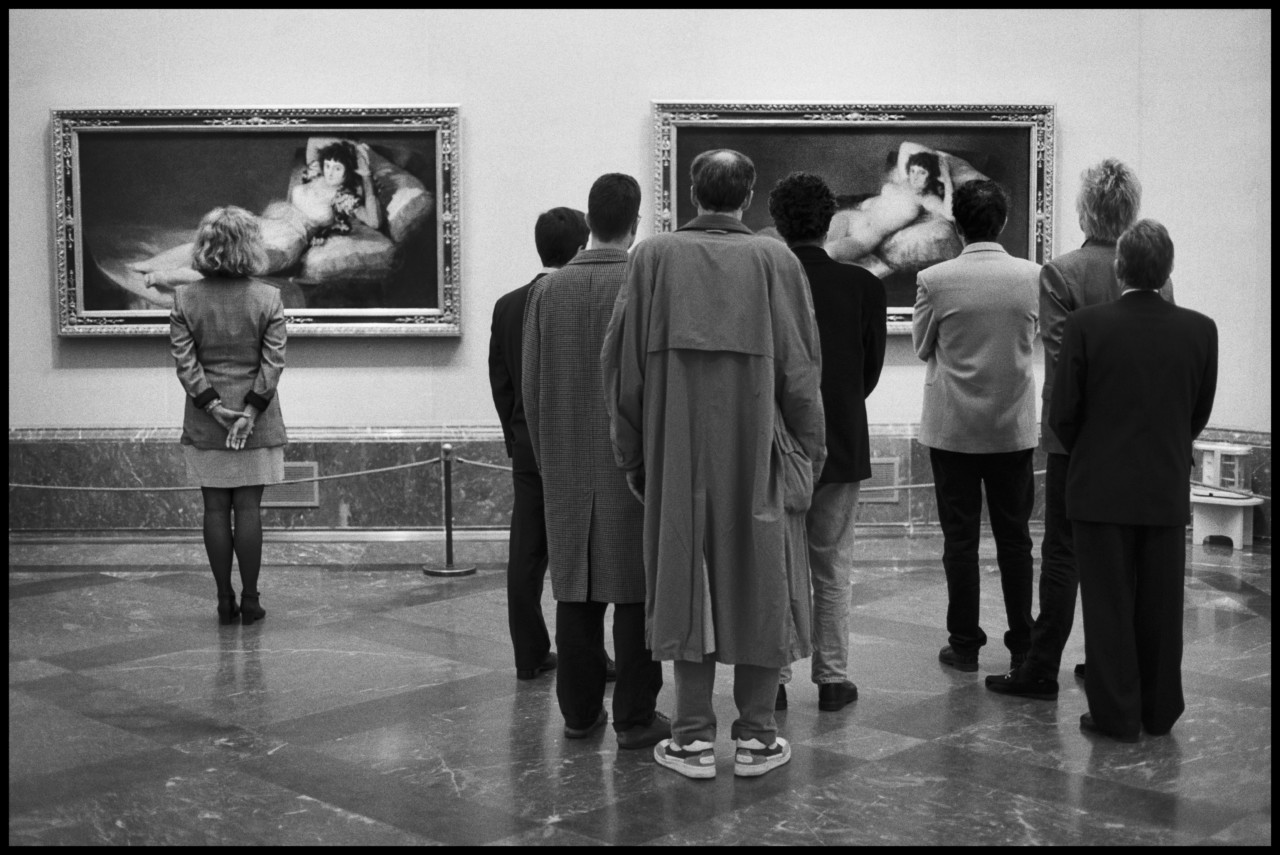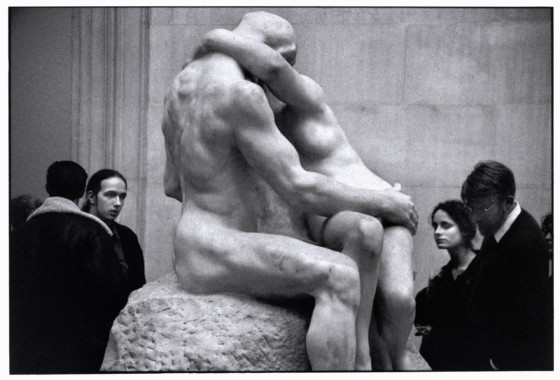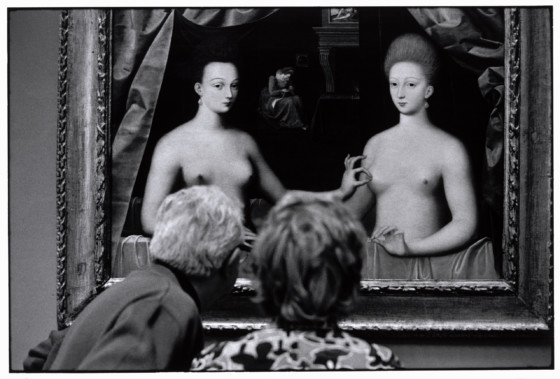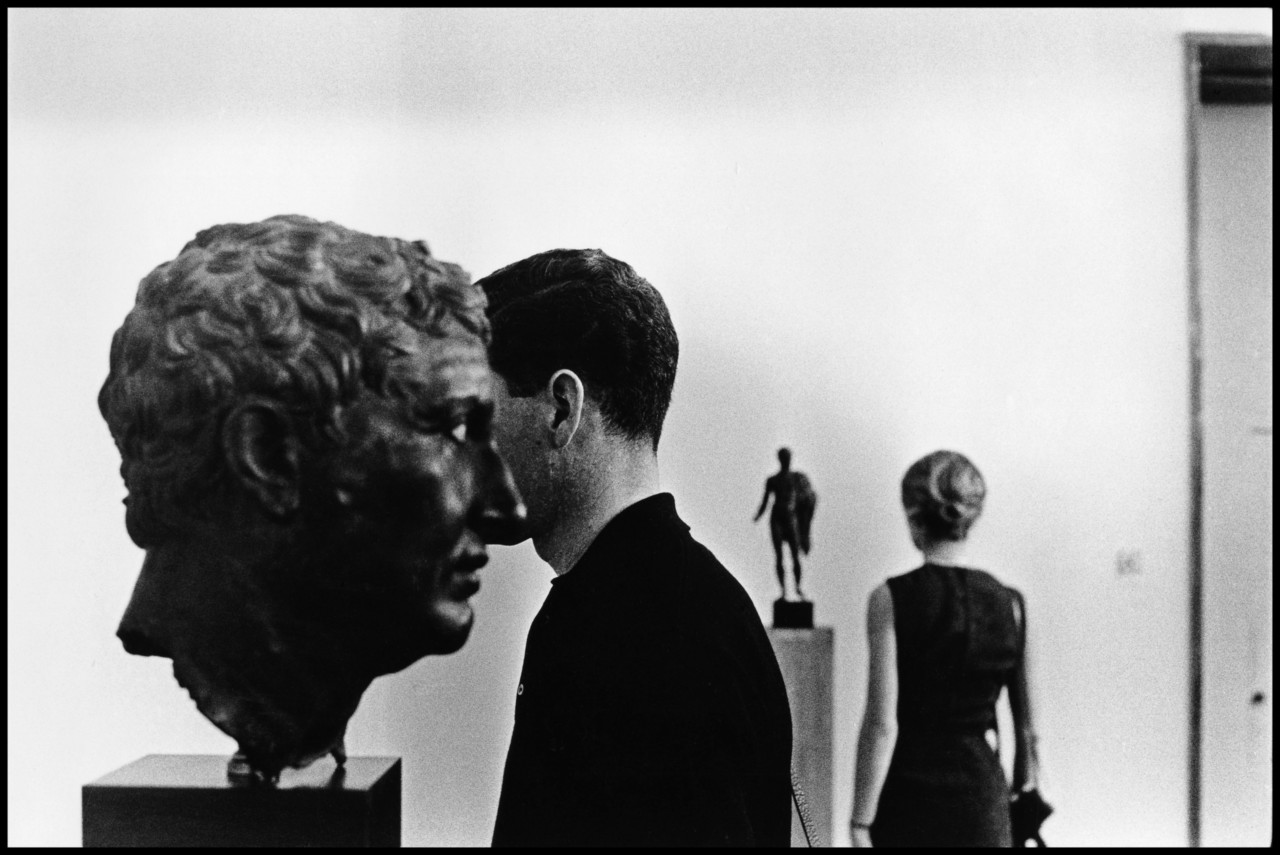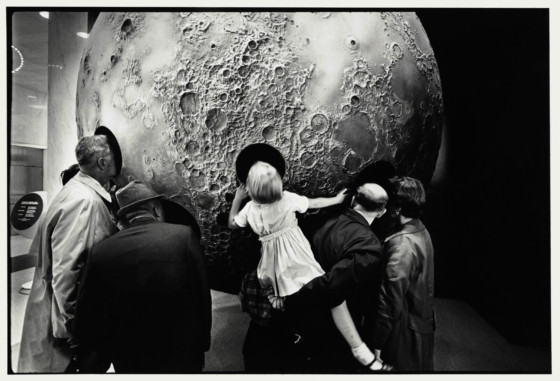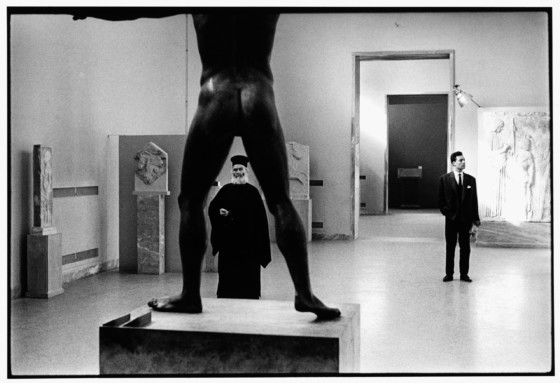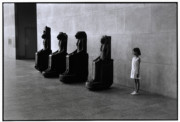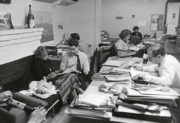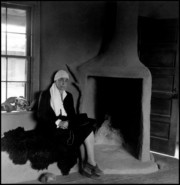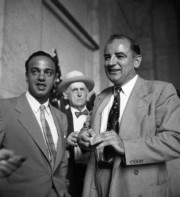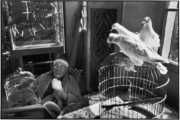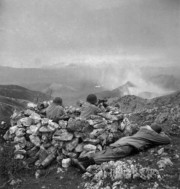The Art of Looking at Art
Elliott Erwitt’s photographs offer a wry take on people-watching
Viewing art can be a highly intimate, immersive experience, or it can be a social exercise — as the Louvre’s Mona Lisa crowds can attest. It’s increasingly an instagrammable occasion, with the #peoplelookingatart hashtag revealing scores of gallery-goers engaging with art and sharing it on Instagram. Despite a study conducted in 2001 discovering the average time spent viewing an artwork is 17 seconds, the recorded effects on visitors range from deeply disturbing to ecstatic joy, touching on a broad spectrum of human emotion, as Magnum photographer Elliott Erwitt’s images of people immersed in looking at art and artifacts reflects.
Erwitt’s photographs capturing candid moments of people viewing art showcase the cultural importance of these venues, while finding space to be playful within their traditional parameters. “I am a dedicated people watcher who loves to see art and art watchers watching,” Erwitt writes in his book, Museum Watching. “For a photographer, rather than fly casting, it’s like shooting fish in a barrel.”
"For a photographer, rather than fly casting, it’s like shooting fish in a barrel"
- Elliott Erwitt
During ‘idle moments’ in his hometown of New York, or while traveling, Erwitt photographed museum culture from 1949–1990s in search of what he describes as “easily accessible, visual displays of the ‘human effort to imitate, supplement, alter or counteract the work of nature.” Taken surreptitiously, often evading security guards, Erwitt pokes fun, asking what is more curious, the art, or the unassuming spectators?
With a droll eye, he captures suited men discussing seemingly empty frames, the gilded eyes of Theban priestess Henutmehyt spying on the young boy at the British Museum, or a photo teasingly depicting a cluster of men staring at The Naked Maja (1800), while a lone woman pauses at The Clothed Maja (1800). But in amongst the wry visual puns, are uniquely human moments, as seen in the portrait of an impish young man, reaching out to touch the bronze fingers of a passing statue. “People seem to be an attracted to items in museums with which they have a special affinity,” he writes. “Perhaps we are drawn to things that resemble ourselves.”
"Art is a good way of looking at nudity without embarrassment"
- Elliott Erwitt
In his written musings in the book, Erwitt unpicks why we visit museums, our fascinations with artifacts and artworks. “Art is a good way of looking at nudity without embarrassment,” he notes. “It’s a cultured way of looking at naughty bits.” He bluntly references the human need to always ‘be somewhere,’ our obsession with ‘human or animal mortality,’ and quips “often the frames are more artistic than their contents.”
"All museums have personalities"
- Elliott Erwitt
Over the decades spent documenting the phenomenon, Erwitt has come to some conclusions about the role of museums, their benefits, and shortcomings: “All museums have personalities: some are intimate and welcoming, others are vast and unfathomable. Some are aggressive and super-modern with no sense of purpose other than to draw attention,” he writes. Ultimately, he states, “In the end all museums are interesting. Even when they’re not.”


